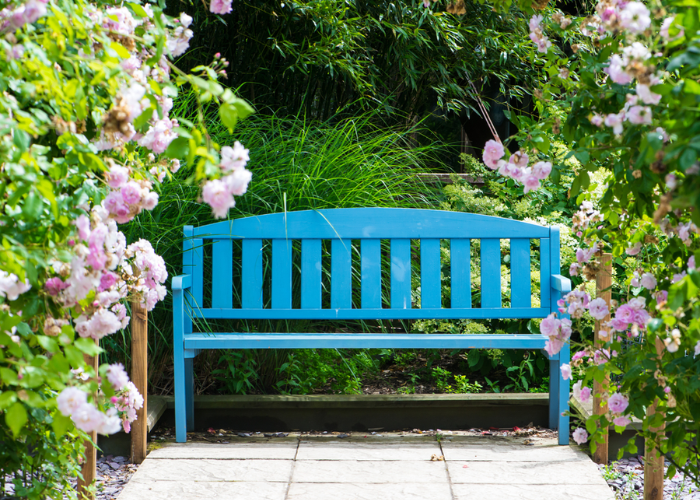
In a fast-paced world where stress and anxiety often dominate our lives, finding moments of tranquility and solace has become a precious commodity. Amidst the chaos, a home garden can serve as a sanctuary, a place where the mind can find respite and the soul can rejuvenate. The art of cultivating a tranquil home garden goes beyond mere aesthetics; it involves a harmonious interplay between nature, design, and mindful cultivation. In this article, we delve into the principles and practices that can help transform an ordinary garden into a haven of peace and serenity.
The Essence of Harmony
Harmony is the foundational principle of creating a tranquil home garden. It embodies a sense of balance, unity, and coherence that resonates through every element of the garden. A harmonious garden is one where each plant, pathway, and ornament complement each other, resulting in a seamless and visually pleasing landscape.
- Designing with Intention: Before embarking on your gardening journey, take time to reflect on the purpose of your garden. Is it a place for contemplation, a space for social gatherings, or a mix of both? This intention will guide your design choices, ensuring that every element serves a purpose in contributing to the overall harmony of the space.
- Unity in Diversity: A harmonious garden celebrates diversity in both plant selection and design elements. Incorporate a variety of plant species that bloom at different times of the year, creating an ever-changing canvas of colors and scents. Introduce a mix of textures, heights, and shapes to create visual interest and a dynamic atmosphere.
The Mindful Garden
A tranquil home garden is not just a collection of plants; it’s a reflection of your mindfulness and connection with nature. Mindful gardening involves being present in the moment, engaging all your senses, and fostering a deep understanding of the natural processes at play.
- Gardening as Meditation: Engaging in gardening can be a form of meditation. As you dig your hands into the soil, sow seeds, and tend to your plants, you’re immersing yourself in the present moment. The rhythmic actions and the connection with the earth can have a therapeutic effect, reducing stress and promoting mental clarity.
- Observing Nature’s Cycles: Being attuned to the cycles of nature is a central aspect of mindful gardening. Witnessing the gradual growth of seeds into sprouts, the unfolding of petals, and the changing of seasons can evoke a sense of awe and gratitude. Embrace the impermanence of nature and find beauty in every stage.
Creating Tranquil Spaces
The design and layout of your garden play a pivotal role in cultivating tranquility. Thoughtfully creating spaces that encourage relaxation and contemplation is key to achieving a harmonious atmosphere.
- Quiet Corners: Designate quiet corners within your garden where you can retreat for moments of solitude. These spaces can be adorned with comfortable seating, surrounded by fragrant flowers or lush foliage, providing a perfect setting for reading, meditation, or simply enjoying the beauty of nature.
- Flowing Pathways: Pathways that meander through the garden can create a sense of movement and rhythm. Choose materials that resonate with the overall theme of your garden – from natural stone to soft gravel – and ensure that the paths are wide enough to encourage leisurely strolls.
The Role of Nature’s Music
Sound can significantly impact the tranquility of your garden. Just as visual elements contribute to the overall harmony, the sounds of nature can create an auditory symphony that soothes the mind.
- Water Features: The gentle trickle of water from a fountain or the soft gurgling of a stream can be incredibly calming. Incorporating water features not only adds a visual focal point but also introduces the therapeutic sound of flowing water.
- Wind Chimes and Rustling Leaves: Wind chimes or the rustling of leaves in the breeze can create a soothing melody that resonates with the natural environment. Place wind chimes strategically to catch the breeze, and choose trees or plants that produce gentle sounds as they sway in the wind.
Nurturing the Garden and the Soul
Cultivating a tranquil home garden requires consistent care and attention, much like nurturing our inner selves. The process of tending to your garden becomes a metaphor for personal growth and mindfulness.
- Practicing Patience: Gardening teaches us the value of patience. Seeds take time to sprout, and plants require time to mature and bear fruit. Embrace the gradual pace of nature’s processes, and let it remind you to approach life with patience and resilience.
- Mindful Maintenance: Regular maintenance is essential to preserve the harmony of your garden. Weeding, pruning, and watering should be done mindfully, allowing you to stay connected to the rhythm of nature and the needs of your plants.
Conclusion
In a world characterized by constant noise and rapid change, a tranquil home garden stands as a testament to the restorative power of nature. Creating and nurturing such a garden is an art that requires intention, mindfulness, and an appreciation for the beauty of the natural world. As you embark on your journey to cultivate a harmonious garden, remember that the process itself is as meaningful as the end result. Let your garden be a reflection of your inner serenity, a place where harmony and tranquility bloom in abundance.





